Please help to implement the dropzone.js to upload the file into Amazon s3 server. Already referred the following link https://github.com/enyo/dropzone/issues/33, but, no idea to implement. kindly help to implement the same. Any dropzone configuration code is required.
Asked
Active
Viewed 1.2k times
1 Answers
43
For someone who might also jumped into this question, I'd like to share my working scenario (serverlessly with AWS Lambda).
Note: A full example can be found in my Vue S3 Dropzone component, the code related to Dropzone and S3 are actually framework agnostic.
So, basically,
- The client (browser) calls an AWS Lambda function to get the pre-signed upload URL for each file being added.
- When the pre-signed URL returned in response, the client will trigger
dropzone.processFileimmediately. - When the file being processing, change
dropzone.options.urlfor the file accordingly.
Hints:
- As I'm signing a PUT upload-able URL, I'm going to hijack the
xhr.sendfunction, otherwise Dropzone will always send file within formData, which is bad for a PUT upload.
The final client code
// In the `accept` function we request a signed upload URL when a file being accepted
accept (file, done) {
lambda.getSignedURL(file)
.then((url) => {
file.uploadURL = url
done()
// And process each file immediately
setTimeout(() => dropzone.processFile(file))
})
.catch((err) => {
done('Failed to get an S3 signed upload URL', err)
})
}
// Set signed upload URL for each file being processing
dropzone.on('processing', (file) => {
dropzone.options.url = file.uploadURL
})
The final AWS Lambda code
var AWS = require('aws-sdk')
var s3 = new AWS.S3();
// Make sure you set this env variable correctly
var bucketName = process.env.AWS_BUCKET_NAME
exports.handler = (event, context) => {
if (!event.hasOwnProperty('contentType')) {
context.fail({ err: 'Missing contentType' })
}
if (!event.hasOwnProperty('filePath')) {
context.fail({ err: 'Missing filePath' })
}
var params = {
Bucket: bucketName,
Key: event.filePath,
Expires: 3600,
ContentType: event.contentType
}
s3.getSignedUrl('putObject', params, (err, url) => {
if (err) {
context.fail({ err })
} else {
context.succeed({ url })
}
})
}
Demo
KF Lin
- 1,273
- 2
- 15
- 18
-
This saved me so much trouble. Thank you! – PureForm Nov 14 '17 at 04:14
-
2You mention on the code that the `header` must be updated for each file but it doesn't look like you do that, how and where is this done? – moondaisy Mar 28 '18 at 13:30
-
You saved my day. The bounty will be awarded to you tomorrow, thank you so much – Hammerbot Jan 15 '19 at 16:16
-
1@KF Lin - i know i'm responding to a very old thread, but i wanted to check whether your solution comes from a pre-Cognito world or post-Cognito world. If using a Cognito identity, do we still need to have a Lambda function generating signed URLs? – Jimit Raithatha May 03 '19 at 17:00
-
@JimitRaithatha I believe the usefulness of Cognito is not requiring the `key` or filename at the time of generating the signature. – dangel Jun 29 '19 at 02:21
-
for someone new to aws, how do you set up the api gateway to run that lambda function? – Scott Jul 16 '19 at 20:38
